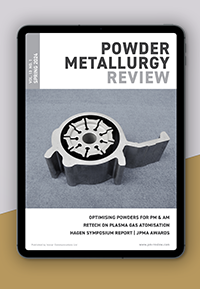Ames scientists eye rare earth materials developments validated by quantum computing
May 10, 2023
A team of scientists from Ames National Laboratory, Ames, Iowa, USA, which operates under the US Department of Energy, has demonstrated a method to leverage the power of quantum computers to make materials research easier and more efficient. A primary research focus at the lab are rare earth materials, which are seeing an increasing demand due to their use in smart phones, computer hard drives, LEDs, electronic displays, and permanent magnets for alternative energy technology, such as wind turbines and electric vehicles.
Quantum computers operate in a completely different way to today’s traditional computers. They are built of quantum bits (‘qubits’), which can encode much more information than the bits in today’s computers, capabilities which allow quantum computers to make calculations beyond what is currently possible with traditional computers. The technology utilises an adaptive algorithm to produce solutions quickly and accurately.
In order to find alternatives for rare earths that are expensive and hard to obtain, Ames scientists are utilising this quantum computing capacity to gain a deeper understanding of the behaviours of rare earth in various materials and applications at an increased pace.
Yongxin Yao, a scientist at Ames Lab, explained that currently it is challenging to accurately simulate rare earth materials on a computer because of their complex electronic structure. The approach his team developed is based on impurity models, which describe magnetic impurities in materials. These models also take into account how the impurity interacts with the rest of the material and helps capture the electronic properties. Further, their approach uses quantum embedding methods to simulate the bulk materials.
In this case, ‘quantum embedding’ refers to a lower dimensional representation of the material. The scientists adopted a systematic way to simplify how the bulk material is represented to make these simulations possible. Using quantum embedding reduces computational resources whilst maintaining accuracy.
“In order to reduce the error in our calculations, we need compact quantum circuits,” Yao stated. “A variety of paths – specifically quantum circuits composed of a set of hardware operations – can move the system from an initial point to the final point you want to reach. Because of the error associated with each operation, you want the shortest path.”
The algorithm Yao’s team used is designed to automatically find the shortest possible paths to reach the targeted state. He said that this work is an important step towards being able to simulate the whole systems of real materials, as when this technology is fully developed, it can help material researchers discover and design new materials for specific purposes more efficiently.
“We have developed some adaptive way to construct compact quantum circuits for either static or dynamic simulations. This work is a first comprehensive application of the adaptive method for impurity models derived from real materials,” concluded Yao. “So that’s an important step toward real materials simulations on quantum computers.”
For a complete look at the research undertaken thus far, Communications Physics published “Comparative study of adaptive variations quantum eigensolvers for multi-orbital impurity models” by Anirban Mukherjee, Noah F. Berthusen, João C. Getelina, Peter P. Orth, and Yong-Xin Yao. The paper is available to read here, in full.
Download PM Review magazine
















